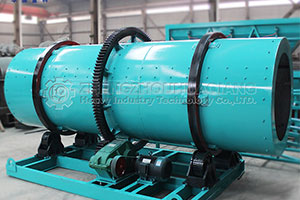
The rotary drum granulator is a core piece of equipment in compound fertilizer production. However, it can easily get blocked during operation due to material sticking, uneven moisture, and other issues, impacting efficiency and product quality.
1.Raw Material Pre-Treatment
Strictly Control Moisture Content: Keep the moisture content of mixed raw materials between 25%-35%. If it's too high, add dry auxiliary materials (like rice husk powder) to adjust. Use online moisture detectors for real-time monitoring.
Optimize Particle Size: After crushing, over 80% of the material particles should be ≤1mm. Fibrous raw materials need extra crushing. Install iron removers to get rid of metal impurities.
2.Key Operating Parameters
Adjust Rotation Speed and Tilt Angle: Adjust the speed of the rotary drum granulator (typically 15-25 rpm) and tilt angle (2°-5°) based on material properties. Use lower values for sticky materials.

Optimize the Slurry Spray System: Use atomizing nozzles. Maintain spray pressure at 0.2-0.4 MPa. Clean nozzles regularly to prevent scaling. Install anti-drip devices to avoid slurry buildup.
3.Maintenance Procedures
Daily Checks: Clean built-up material where the retaining ring meets the riding ring. Check lubrication of drive gears. Ensure slurry spray lines are clear.
Periodic Maintenance: Thoroughly clean sticky buildup in the granulation zone weekly. Replace worn scraper blades monthly. Calibrate metering equipment accuracy quarterly.
In summary, controlling raw materials, optimizing parameters, and following maintenance routines significantly reduces the chance of rotary drum granulator blockages.